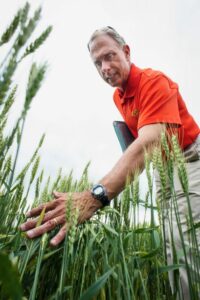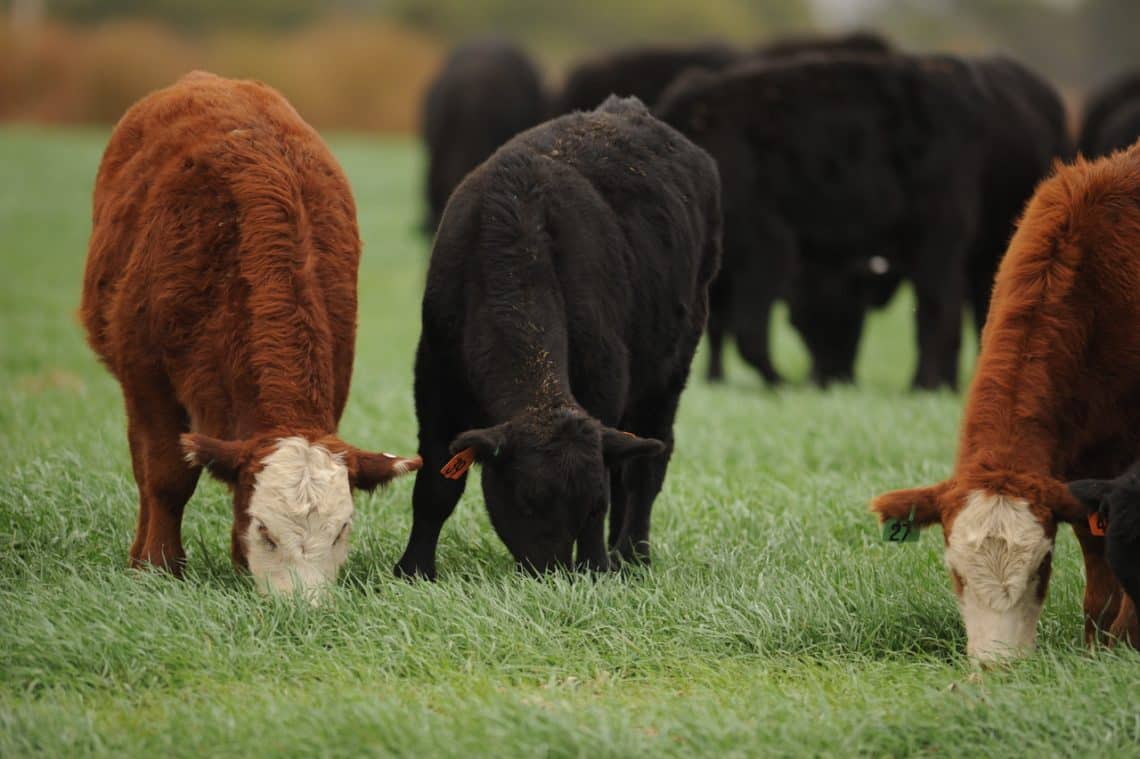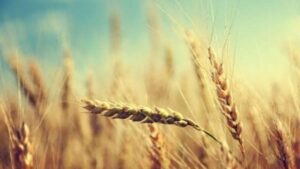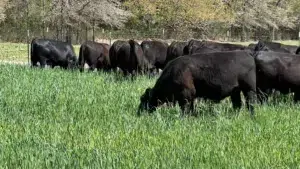Dual-purpose varieties for grazing and grain provide farmers and ranchers flexibility for in-season changes.
There is more to the value of wheat than the value of its grain. In some markets, wheat straw is worth more than the grain. In southern Plains states where pasture is plenty, farmers and ranchers use stocker cattle or fall-weaned calves to turn a profit. Here, wheat grass is used for grazing.
When the wheat is planted, about one-half of the crop is usually intended to be grazed. As the winter season progresses, intentions may change as market prices for wheat and beef change. Having a wheat crop that allows growers to make midseason decisions is a valuable option.
“Wheat is an almost perfect cool-season grass for Oklahoma and Texas cattlemen,” says Brett Carver, head of Oklahoma State University’s (OSU’s) wheat breeding program at Stillwater. “Here, winter wheat is used as a dual-purpose crop. It can be grazed from late fall to early spring with stocker beef cattle and then be allowed to mature and harvested for grain.”
If winter and early spring market prices are more favorable for beef, a farmer could decide to keep cattle on pasture longer and use more wheat for forage instead of letting the crop grow and mature for grain production.
According to Carver, the best areas for dual-purpose grain-graze wheat are Texas and Oklahoma, eastern New Mexico and southern Kansas. In much of this area, farmers do not have many crop options other than wheat. There are a few cool-season forage grasses adapted to the region, but they usually take too long to establish in a double-crop rotation. Farmers don’t usually double-crop winter wheat after soybeans or corn, so early planted wheat used as winter forage is not a problem.
Four critical growing conditions are needed to raise wheat as a dual-purpose crop, according to Carver. These include:
- Dual-purpose graze-grain varieties work best with winter wheat.
- Winter temperatures must be warm enough to allow forage crops to grow from planting through to spring. North of central Kansas, temperatures are too cold for sustained winter forage growth.
- In areas with too much winter rain, grazing cattle will trample and destroy the wheat crop.
- If winter wheat is double-cropped, the preceding crop must be harvested early enough to allow wheat to be planted six weeks earlier than normal to allow time for establishment and for it to produce forage before the cattle arrive.
Plant Breeders and Cattlemen Intersect

“Organic wheat seed is a small, niche market,” Carver says. “But for no more expense to redesign our breeding process, we have developed a seed product in some cases ideally suited to organic cropping systems.”
Carver explains the GrazenGrain varieties were bred for early season planting, which allows for early canopy closure. However, this same trait helps organic producers control early-season weeds.
Additionally, he says increased insect and disease resistance requires less chemical pesticide control, and increased nitrogen use efficiency results in less need for fertilization.
“A good dual-purpose wheat variety makes it easier for cattleman to change intentions after the crop is established as to whether to use if for grain or forage alone. This is where the cattle industry and wheat breeding intersect,” Carver says. “The characteristics cattlemen want in their wheat are different from what grain-only producers want. They are both looking at yield, but yield means something very different to each of them.”
The cattle producer measures yield by the amount of early-season biomass production and regeneration of biomass during the grazing period, Carver explains. The grain farmer looks at grain production with little concern for vegetative biomass production. In some scenarios, the grain producer could actually consider heavy biomass production a detriment.
The cattle producer wants a plant that can be grazed as late as possible with minimal or no loss in grain yield relative to a grain-only system. In this case, grazing recovery is the driving factor for a variety best fit for forage-plus-grain production. The grain producer wants a plant with stiff straw that will stand erect and not lodge or go down until harvest.
The ideal plant will have the characteristics desired on both sides with no yield drag when harvested for grain.
Revamped Breeding Strategy
“When I took leadership of the OSU wheat improvement program in 1998, I realized we could not — with any kind of regularity — develop an ideal variety for dual-purpose use without selecting for characteristics unique to a dual-purpose system. There is not that much genetic variation in wheat,” Carver says. “So we had to jump in and breed for it. It is difficult to breed a variety strictly for grain production and then hope it will fit a dual-purpose system.
“We changed our whole strategy. We went from breeding varieties strictly for grain production to now breeding varieties for dual-purpose adaptation. I don’t know of another program that will actually breed — not simply test — the variety for dual-purpose use. The GrazenGrain lines is a moniker we use to designate those varieties that were developed under, and best fit, actual grazing conditions. It is a more cumbersome system and more expensive because we have to bring in the cattle. We may simulate grazing stress by using a lawn mower, but it is not the same. I have to rely on cattle at key points in the breeding process, especially during the early generations of line development when gene segregation occurs.
“It is amazing to see what happens to your germplasm during consecutive years of grazing. The appearance of segregating F2 through F5 populations will change in response to a grazing system. The plants may become more prostrate, and crown tissue is more robust and better capable to regenerate vegetation. It matures a little bit later as it becomes more adapted to a grazing system.”
The response to selection is not the result of epigenetics or genetic changes; it is expression of the natural variation in the original F2 population.
Through the years, Carver and his team have released a number of varieties. In 2004, OSU released Endurance, the first GrazenGrain variety. Duster, another GrazenGrain variety, was released in 2006 and has become a leading variety with minimum grazing penalty. Grain yields after grazing can be reduced up to 30 percent. Carver aims for 10 percent or less when it comes to yield reduction.
To learn more about Carver and his work, be sure to check out this video as Seed World’s Publisher Shawn Brook had a chance to visit with him at this year’s National Association of Plant Breeders annual meeting.












